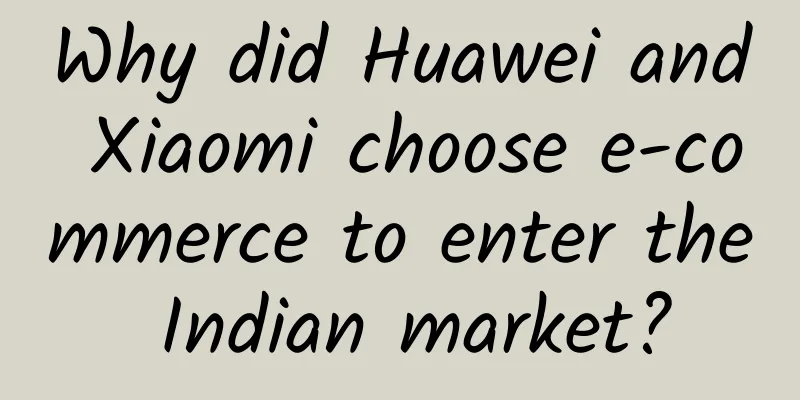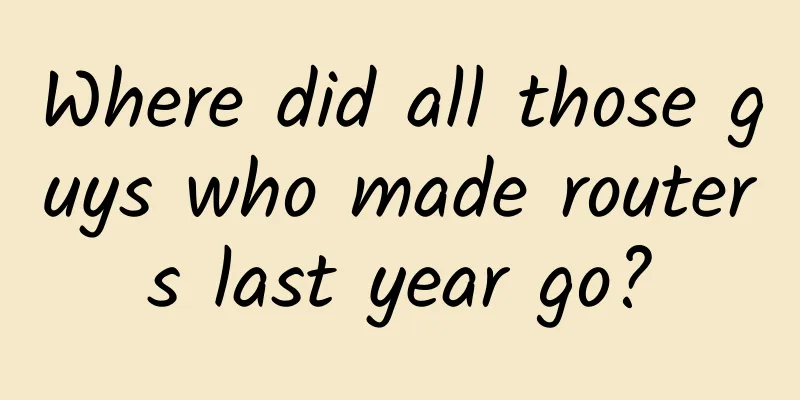Why did Huawei and Xiaomi choose e-commerce to enter the Indian market?

|
In 2007, two young men, Sachin Bansal and Binny Bansal, who graduated from the Indian Institute of Technology, Delhi, got inspiration from Amazon's online bookstore and founded Flipkart. At that time, almost no Indians bought anything online except air tickets, and some consumers even doubted that the goods purchased on the Internet would not be delivered to their homes. However, five years later, Flipkart has become the " Taobao " of India. When Flipkart approached Huawei in 2014 hoping to introduce the Honor brand, the two sides hit it off immediately. "Huawei hopes to become the number one e-Brand." Huawei India Terminal Business Department Sales Director PSanjeev said in an interview with China Business News in Gurgaon recently that e-commerce channels are growing rapidly in India. Xiaomi , OnePlus and even some unknown Chinese OEMs share the same idea . What they all see is the huge Indian e-commerce market that is about to explode. According to statistics from Technopak, a New Delhi retail consulting firm, although India's e-commerce industry is still in its infancy compared to China, it is expected that Internet sales will grow rapidly in India, possibly increasing to an average of US$32 billion per year in the next six years, while India's current annual Internet sales are about US$2.3 billion. New battlefield for Huawei and Xiaomi Although e-commerce channels are very popular, Huawei and Xiaomi have coincidentally placed their main offensive forces on e-commerce channel vendors. However, in fact, in the past two years, many domestic mobile phone manufacturers have shown more caution in their investment in Indian e-commerce channels. The reason is that before 2013, the market share of Indian e-commerce was only 3%, and even last year, it only reached 12.5%. According to data from global research firm IDC, the fastest growing price ranges in Indian e-commerce channels are 75-100 US dollars and 100-175 US dollars, with growth rates of 3.7% and 3.8%, respectively, while the growth rate of models above 325 US dollars is only between 0.1% and 0.3%. This means that if you want to challenge Samsung and Apple in the mid-to-high-end market , e-commerce is obviously not a good choice. The head of a local domestic mobile phone manufacturer told our reporter that if the sole purpose is to gain market share, the mixed crowd of e-commerce companies does not seem to be able to provide everyone with a "fair" stage, and in the end what is being compared is still price. In addition, the real local environment in India seems to make many people worried about the development of e-commerce. "For example, consumers are reluctant to fill out their credit card information on the Internet, and the proportion of consumers without credit cards may exceed 60%. Consumers even have to worry about whether the purchased goods will be taken away by couriers. You have to know that India is still a country with a huge gap between the rich and the poor." Zhang Wenxue, head of Keyv International, which has been deeply involved in the Indian market, told our reporter. Then why do Huawei and Xiaomi still choose to enter the Indian market through e-commerce? Xiaomi, which was born in the Internet industry, is naturally dependent on and has its own advantages in e-commerce channels. Its choice may not be difficult to explain. According to public information, on July 22 last year, Xiaomi's first online sales in India received 100,000 reservations within a week, and the Xiaomi 3 smartphone was sold out in 39 minutes after it was launched. On August 6 last year, Xiaomi India announced that 15,000 Xiaomi 3s were sold out in 2 seconds. On August 12 last year, 20,000 Xiaomi 3s were sold out in 2.4 seconds. In October last year, less than 4 months after Xiaomi entered the Indian market, its sales exceeded 500,000 units. Lei Jun said in an interview with the media in India that compared with the large amount of homogeneous competition in the Chinese market, the competition in the Indian smartphone market is still relatively mild, so Xiaomi chose India as the first stop to break into the international market. For this reason, Xiaomi also signed an agreement with Amazon and Indian e-commerce Snapdeal to sell Xiaomi mobile phones. However, many Chinese mobile phone manufacturers in India expressed confusion about Huawei's strategy in India. In fact, unlike Gionee, Vivo and other brands that have been deeply involved in local public channels and implemented channel sinking strategies, Huawei currently does not have much voice in the Indian public market. "Huawei's data card business was very strong in the past few years, but its voice has been muted in the smartphone market, which is very strange." The overseas head of a domestic mobile phone manufacturer told our reporter that Huawei's advertising activities in Southeast Asian markets are not small, and its channel expansion is also very "domineering", but in India, what we see now is only Honor's actions in the e-commerce field, and e-commerce is relatively weak in Indian channels. In this regard, Huawei's local terminal sales director in India PSanjeev told our reporter that low prices are not Huawei's pursuit, and Huawei has its own considerations for breaking into e-commerce. In fact, Huawei entered the Indian market more than a decade ago, but it mainly engaged in B2B business. In terms of terminal products, data cards, wireless routers, set-top boxes and other products all sold quite well. PSanjeev said that Huawei's data card sales ranked first in 200 cities in India. However, looking at the Indian mobile phone market over the past two years, we can see that in India, 97% of the market is concentrated below RMB 2,000, and smartphones below RMB 1,000 account for 80% of the overall market. Starting from e-commerce channels may be the best offensive model currently adopted by Huawei. Sanjeev emphasized to our reporter that Samsung has 70,000 mobile phone stores in 200 cities in India, while Nokia's number was even more exaggerated in the past, with 300,000 stores. For Huawei, it may not be realistic to make such a high market investment at the beginning. During the field visit, our reporter found that there are many mobile phone brands like Huawei that hope to "take small steps and move forward". E-commerce is not mature yet Judging from the layout of capital, e-commerce seems to have become a "fast-maturing" market. Earlier, it was reported that Alibaba and Foxconn planned to jointly invest about US$500 million in Snapdeal.com, a large Indian e-commerce company, valuing the latter at about US$5 billion. After the transaction is completed, Alibaba and Foxconn will jointly own 10% of Snapdeal.com's shares. The transaction still needs to be approved by Indian regulators. Snapdeal and Amazon are Flipkart's biggest competitors in India. Amazon entered the Indian e-commerce market in June last year, and now there are more than 5,000 Amazon merchants in India. Some overseas media quoted Amazon CEO Bezos as saying that Amazon will further enhance its influence in the Indian market. He said that according to the current scale and growth rate, India will become Amazon's fastest growing market. According to recent news, Alibaba Group is in advanced talks to invest in Paytm, an Indian online payment platform and e-commerce company. Paytm is India's "Taobao + Alipay", responsible for processing online payments and operating an Internet marketplace that Indian users can use through their mobile phones. Obviously, it is not just Chinese mobile phone manufacturers, but also Chinese e-commerce giants that are optimistic about India's market potential. But what Huawei may be more concerned about is the performance of the Honor brand on existing e-commerce channels. "Huawei is a long-distance runner. Since the listing of Huawei Honor in October 2014, our cooperation with Flipkart has achieved good results." PSanjeev told our reporter that it is expected that shipments in the Indian market will increase tenfold to 2 million units this year. Partner Flipkart gave Huawei confidence. In 2014, Flipkart made a decision to support cash on delivery and select products with higher cost performance. Flipkart hopes to use these two strategies to attract more consumers to shop online. "Since e-commerce companies are still in the stage of chasing growth, improving and expanding technology and logistics, and attracting new customers, profitability is still out of reach despite market prospects," said Sachin Bansal, co-founder of Flipkart. "We don't plan to start thinking about profitability in the short term. The growth rate of India's e-commerce market is also accelerating. Huawei believes that the number of online shoppers in India will triple in 2016 compared to 2014, and the number of e-commerce consumers will reach 100 million, with most new e-commerce consumers coming from first- and second-tier cities. IDC data shows that the proportion of e-commerce channels will increase from 12.5% last year to 20% this year, if the situation is optimistic. But local Indian channel dealers and other domestic mobile phone manufacturers stationed in traditional agency channels may not think so. "Indian consumers have a lot of family time. They like to shop offline and like to see the real products." A domestic packager of Gionee in Jaipur told our reporter that the regional differences in the Indian market have created complex situations in different places, so the product line requirements for e-commerce must be very broad. It is not possible to meet all needs by relying solely on e-commerce, but once the e-commerce channel is extended, there will be channel risks. “And there is also the issue of after-sales centers. If there is a problem with the mobile phone, the after-sales center needs to handle it. E-commerce channels do not have any advantages over offline channels in this regard.” The above-mentioned national packager said that it has more than 80 city-level agents in northern India, covering towns around Jaipur. In his opinion, e-commerce channels have potential in the future, but the turning point will not be in recent years. "We are also looking for suitable locations for offline stores. Huawei's next plan is to introduce flagship models to first- and second-tier cities in India. In the future, Huawei's flagship products can be seen in more specialty stores." PSanjeev showed our reporter a local map of Delhi, India, with some of Huawei's offline channel locations marked on it in his office. He told our reporter that another benefit of e-commerce channels is that Huawei can find out where its users are through "e-commerce big data" so as to make further arrangements. Mobile phone manufacturers already have their own answers on how to grasp e-commerce channels. As a winner of Toutiao's Qingyun Plan and Baijiahao's Bai+ Plan, the 2019 Baidu Digital Author of the Year, the Baijiahao's Most Popular Author in the Technology Field, the 2019 Sogou Technology and Culture Author, and the 2021 Baijiahao Quarterly Influential Creator, he has won many awards, including the 2013 Sohu Best Industry Media Person, the 2015 China New Media Entrepreneurship Competition Beijing Third Place, the 2015 Guangmang Experience Award, the 2015 China New Media Entrepreneurship Competition Finals Third Place, and the 2018 Baidu Dynamic Annual Powerful Celebrity. |
<<: Wuzhen Index: 2017 Global Artificial Intelligence Development Report (Investment and Financing)
>>: China Economic and Social Service: 2016-2017 China Internet of Things Annual Report
Recommend
5 ways to screen high-quality channels in App promotion
The previous article "How to Find More than ...
Is it true that people who like spicy food are more likely to get hemorrhoids?
You have been sitting on the toilet for a long ti...
Cloudrive 3.0, an integrated dual-map navigation system, is first installed on Tiggo 5x, opening up a new way of intelligent human-vehicle life
What will the future of car life look like? With ...
Seres Automobile: In October 2022, Seres Automobile sales reached 12,047 units, a year-on-year increase of 461.37%
Recently, SERES Group issued an announcement stat...
Where is the traffic pool for educational institutions in 2021?
In 2020, affected by the COVID-19 pandemic, the o...
Bobo's weekly private domain case class
Bobo's weekly private domain case course reso...
Zhihu advertising, Zhi+ account opening guide!
Each platform has its own advertising management ...
A new turning point in the online drama industry from Sohu's self-produced drama "The Hypnotist"
The exclusive drama "The Hypnotized Hypnotis...
Alibaba's strategic holding of Yi Media will invest in the "cash + resources" model
On January 14, AdChina Group, a domestic integrat...
In-depth information | The most comprehensive guide to Baidu information flow advertising is online
Baidu is one of the three largest traffic giants,...
The peak season for dengue fever is here. You need to prepare in advance for the May Day holiday.
As temperatures rise across the country, mosquito...
How to have high-quality sleep? Do these things and you will have sweet dreams!
It is very important to form good sleeping habits...
All 300+ hot spots in 2017 are here. Don’t tell me you can’t keep up with the hot spots!丨
It's the end of the year again. Advertising an...
How does the wedding photography industry use TikTok? Case Study
"For wedding photos that only happen once in...
IDC computer room rental hosting server charges
With the maturity and development of the Internet...









